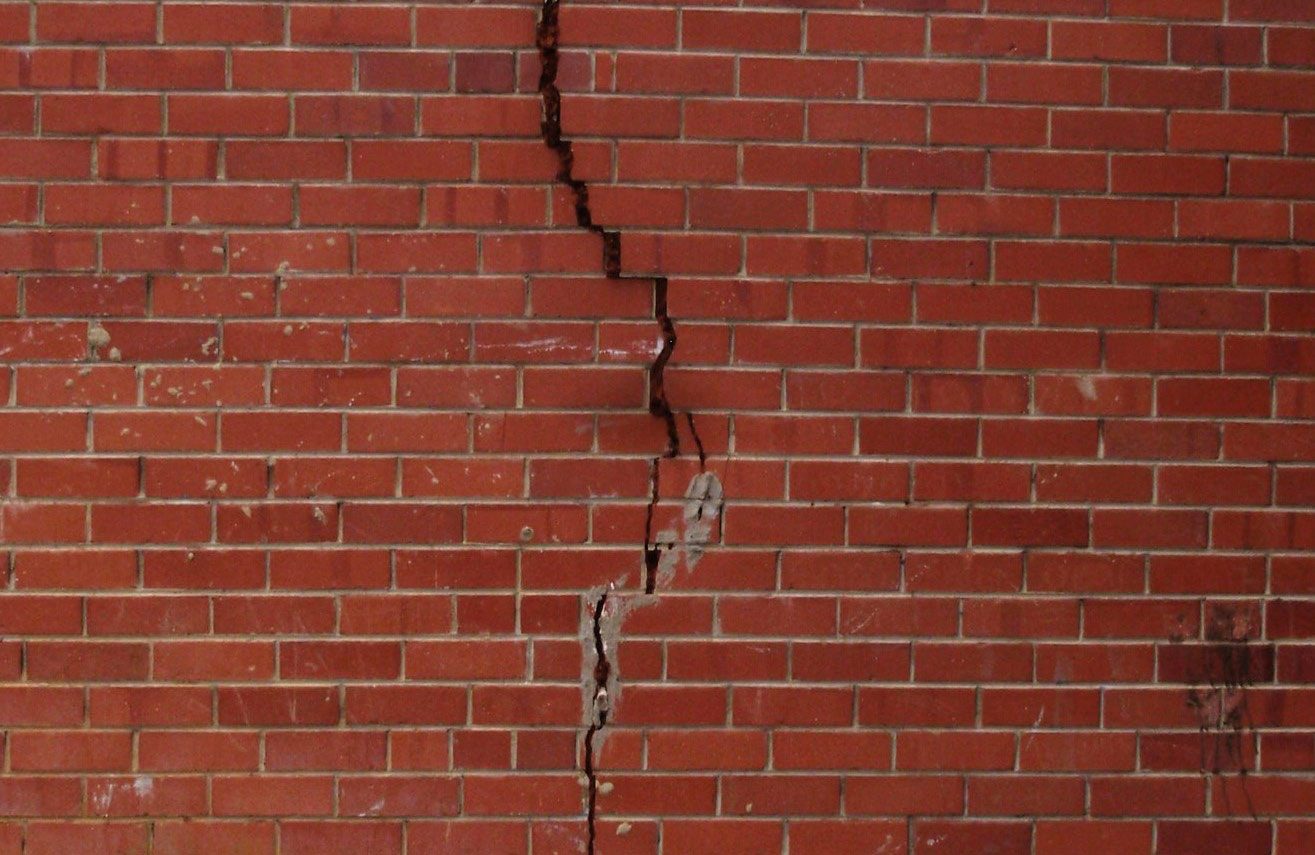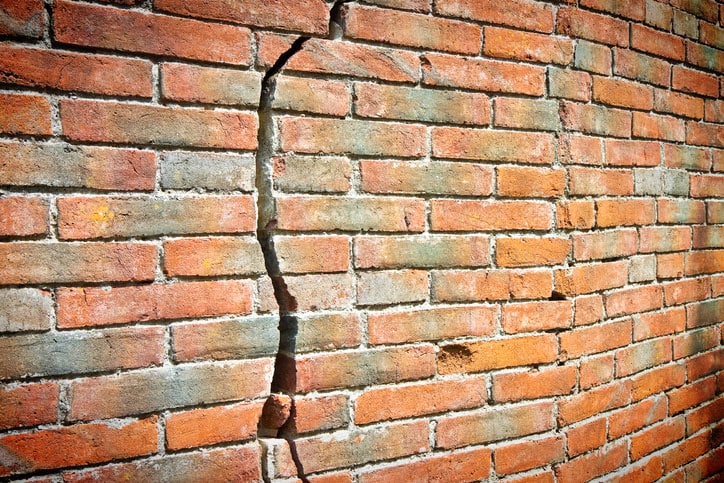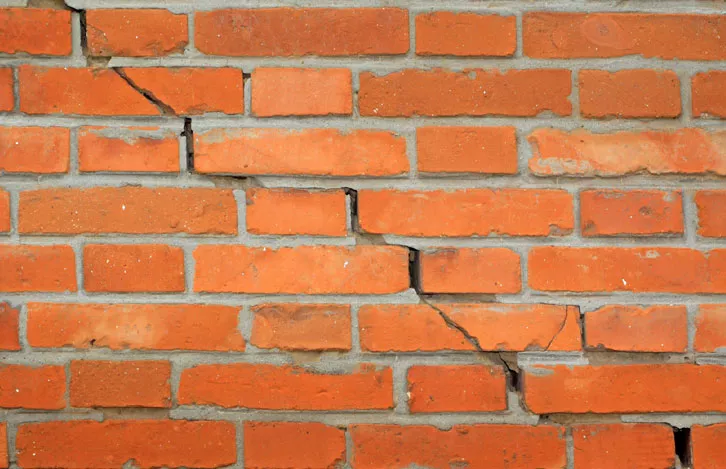Phone:
(701)814-6992
Physical address:
6296 Donnelly Plaza
Ratkeville, Bahamas.

Here, the causes of cracks in brick walls are as follows.
It all starts with the building of the house. Soil excavation has taken place in order to lay the foundations of a building. The ground settles over time, and the foundation of the home slides somewhat. This movement can generate minor vertical cracks, which are usually not an issue.
Depending on the type of soil on which your house is built, your house may endure more drastic movement, which can cause significant damage. Natural calamities such as earthquakes, floods, and hurricanes can severely destroy your home’s foundation.
See Also: Expert tips on finding the best buyers agent in Sydney.
The materials used to construct our homes respond quite a bit to climatic and seasonal fluctuations. Long periods of drought, as well as rain and water, can cause damage to the walls and foundations.
Building materials do not last indefinitely. Weather, gravity, and poor upkeep all have an ongoing impact on our structures. Building reinforcement is prone to corrosion, especially if the concrete base is not adequately installed. Foundation fissures expose the steel reinforcement to moisture, which can cause rusting and lead to brick wall cracks.
If you live near a building site, your brick walls may be affected. Heavy machinery, excavation, and digging may cause your brick walls to break.
Soils like clay expand when wet and split and shrink when dry. You may notice minor cracks in your walls if your home is built on clay soil.
Unfortunately, these cracks are usually cosmetic in nature and can be easily repaired. Cracks larger than 3 mm should be taken seriously, and an expert should be called to evaluate your home or building.
Having large trees close to your home might cause brick walls to crumble. As a result, their root systems are invasive and can damage your home’s foundation. In addition, they require a lot of water, which can alter soil moisture.
Also, cracks in walls can be caused by dry soils. Small brick cracks are typical and do not signal an issue with the foundation. This is due to the fact that brick has a natural tendency to expand.
Bricks are composed of inflexible baked clay that has been crushed. As a result, when your house settles or due to external forces, they’re more likely to crack.
Small cracks in brick walls are widespread and usually innocuous. Large brick cracks on the outside of your house, on the other hand, may signal a foundation problem.
A cracked brick should be replaced as soon as you notice it. Your home could be damaged by water entering via a fracture in the masonry, which could cause structural damage and interior finishes to be damaged. If there is excess moisture, mold might develop, which can be costly.
In most home improvement stores, you can purchase affordable bricks for this project. But don’t just ignore it! It’s possible that your foundation has further problems if the break extends beyond a single brick. Especially if there are multiple cracks in the brick, it’s possible that there is an underlying cause.
This is a problem that needs to be addressed immediately. This can cause problems with the brickwork that uses the foundation as a base.
Use a rake bar to remove the old cracked horizontal mortar from the joints. Do not break the bricks and do not go deeper than 1.5 – 2 cm into the wall when removing the bricks. As well, remove the bricks’ vertical joints at the ends as well. Use a chisel and a hammer to accomplish so.
The mortar will begin to fracture when you tap the chisel with the hammer until you have cracked the mortar. 1.5 – 2cm is the maximum depth you should dig into the soil. Brush the joints with a wire brush to verify that all extra mortar has been removed.
Water must be sprayed on the wall once all mortar has been removed. A dry brick wall will absorb all the water from the fresh mortar, causing the wall to crack all over again if it is not repaired.
Then, using a brick jointer, push the mortar into the joints. Do not leave any empty spaces! You don’t want to overwork the mortar when mixing it.
As previously said, bricks expand and contract depending on the weather, and if the mortar is excessively hard, it will crack again, causing even more harm. To flatten the mortar, dampen the pointer and push it into the joint.
Minor foundation cracks might cost as little as $500, while major foundation repairs can cost as much as $10,000. The sooner you get the cracks repaired, the less money you’ll have to spend. For a one-story home with modest cracks, exterior brick wall cracks can be repaired for $450 to $600.
The Average Foundation Repair Cost The majority of foundation repairs cost between $4,000 and $10,000 to complete. Over time, all houses settle, but if yours settles too much, it can cause serious structural issues. Piering and underpinning problems are repaired for $1,340 to $1,500 per pier.
Homeowners pay an average of $10/sq.ft. to repoint brick. In some cases, costs might reach up to $25 per square foot, depending on the materials and labor employed.
Mainly there are three types of bricks cracks are as follows.
Small, thin vertical brick cracks can show up right after a home has been built and can be traced back to some initial foundation settlement. Though usually minor, these cracks should still be examined by a professional. Wide vertical brick cracks, on the other hand, are serious indicators of a foundation problem.
Veneer cracks are zig-zags that go along the mortar line around the bricks. Because they only appear in the mortar, some homeowners assume that the fix will be a simple one, but the reality is that these cracks are often signs of major structural damage.
Small, thin vertical brick cracks can show up right after a home has been built and can be traced back to some initial foundation settlement. Though usually minor, these cracks should still be examined by a professional. Wide vertical brick cracks, on the other hand, are serious indicators of a foundation problem.
Cracks that move vertically are caused by sinking, settling, or sagging foundation problems. Settling issues arise when the soil under your house shifts or moves. Usually only one part of your home will sag into the changed soil, so cracks in your foundation occur.
Vertical cracks usually occur in foundation walls when there is insufficient support below. The main reason for this lack of support is when the soil beneath the foundation has not been properly compacted and compresses or even washes away.
These types of cracks almost always indicate foundation failure. What this typically means is the soil under and around your house is pushing against your foundation and forcing the walls inward.
Brick veneer cracks are zig-zag cracks that follow the mortar line around the bricks. While this crack may seem a simple fix, as they appear only in the mortar, it’s often the telltale sign of serious structural damage.

Vertical cracks are most often met in warmer climates. Their characteristic is that vertical bricks can appear in the mortar and brick, effectively splitting the brick in two. Almost always, vertical cracks are caused by thermal expansion, which leads to movement of the material, which results in vertical cracks.
This does not necessarily mean that a foundation needs to be fixed. Small brick cracks are common and do not indicate foundation problems. That’s because brick is naturally prone to expanding. If only a few bricks are affected by fractures, don’t worry about it.
A stair-step crack will usually point to the area of the foundation that is sinking or settling. Stair-step cracks in brick are often due to uneven, moisture-related settling of the foundation.
Repairing stress cracks in a wall costs $100 to $150, on average. Settlement of the foundation, seismic activity, structural problems, poor installation, and similar issues cause stress cracks.
Minor cracks that don’t affect the structure’s integrity cost as little as $250 to repair, while major cracks price at $800. Cracks happen when the foundation sinks or there’s too much pressure on the foundation from surrounding soil. Small cracks don’t usually cause structural damage.
Although masonry can deform elastically over long periods of time to accommodate small amounts of movement, large movements normally cause cracking. Cracks may appear along the mortar joints or through the masonry units.
Foundation Damage. Unfortunately, cracking in your walls and ceilings may also be the result of damage to your foundation. If you’re seeing large cracks that are more than a quarter-inch wide or other signs that have you concerned about your foundation, it’s definitely time to have your home checked.
The best way to repair a crack in drywall is to re-tape the joint. This involves scraping away the loose tape and crumbled bits of drywall mud, sanding the surface smooth, and then filling the crack with drywall compound and applying new tape.
Here, the causes of cracks in brick walls are as follows.
A crack is more serious when it’s between five and 15 millimeters wide (0.5 to 1.5 centimeters, or up to half an inch) as the cause could be more serious than simply dried out plaster or a house that is settling.
Small brick cracks are common and do not indicate foundation problems. That’s because brick is naturally prone to expanding. If only a few bricks are affected by fractures, don’t worry about it. Deterioration and structural foundation damage is probably not a concern.
Vertical cracks are typical in warm climates and are caused by the expansion of the materials. Brick veneer cracks are stair-step-shaped cracks that appear between and around bricks. These cracks are a sign of serious structural damage. They need immediate attention from a professional.
Like stairstep cracks, vertical cracks can also be a sign that your foundation is settling. A brick wall that has a vertical crack that is wider at the bottom than it is at the top indicates a possible sag in the foundation and may need attention. Foundation settlement cracks come in all sizes.
If you spot cracks running up and down your brick walls, you should be concerned about shifting ground. If the ground under your foundation shifts, the home can’t settle normally. If you fail to address this soil shifting, it could lead to significant foundation damage and compromise your home’s structural integrity.
To repair cracks in bricks caused by movement, follow these steps:
If you have cracks in the bricks of your stairs, it’s important to address them promptly to prevent further damage. Here’s what you can do:

Cracks which step up the brickwork diagonally are often a sign of subsidence under your foundation. If the crack gets bigger than 2mm or you notice other signs of subsidence, such as doors or windows sticking, you should get a professional in to take a look.
They occur as a result of the soil destabilizing and pushing your walls and foundation inward. As long as the crack is left to grow, the wall will eventually bow and become more susceptible to complete collapse — which can take the rest of your home down, too.